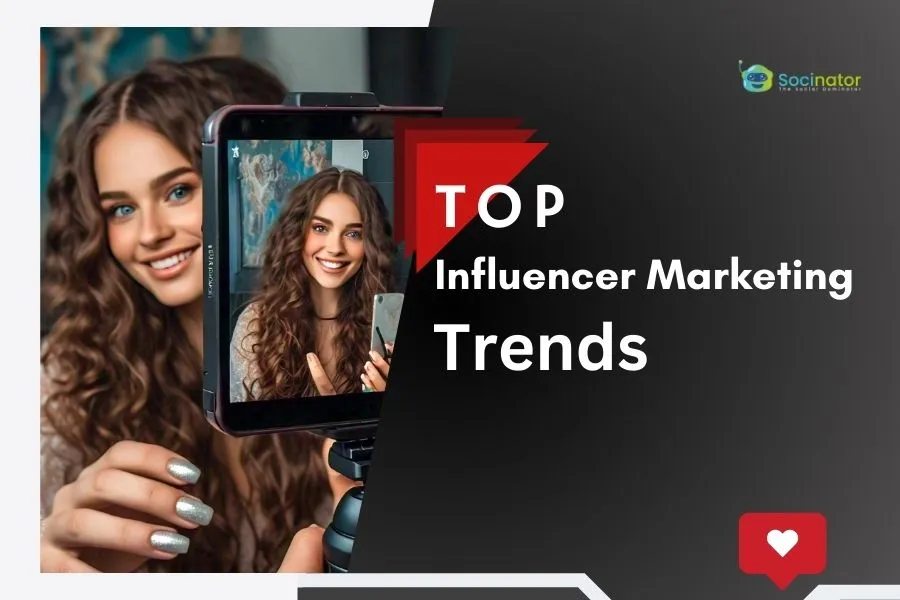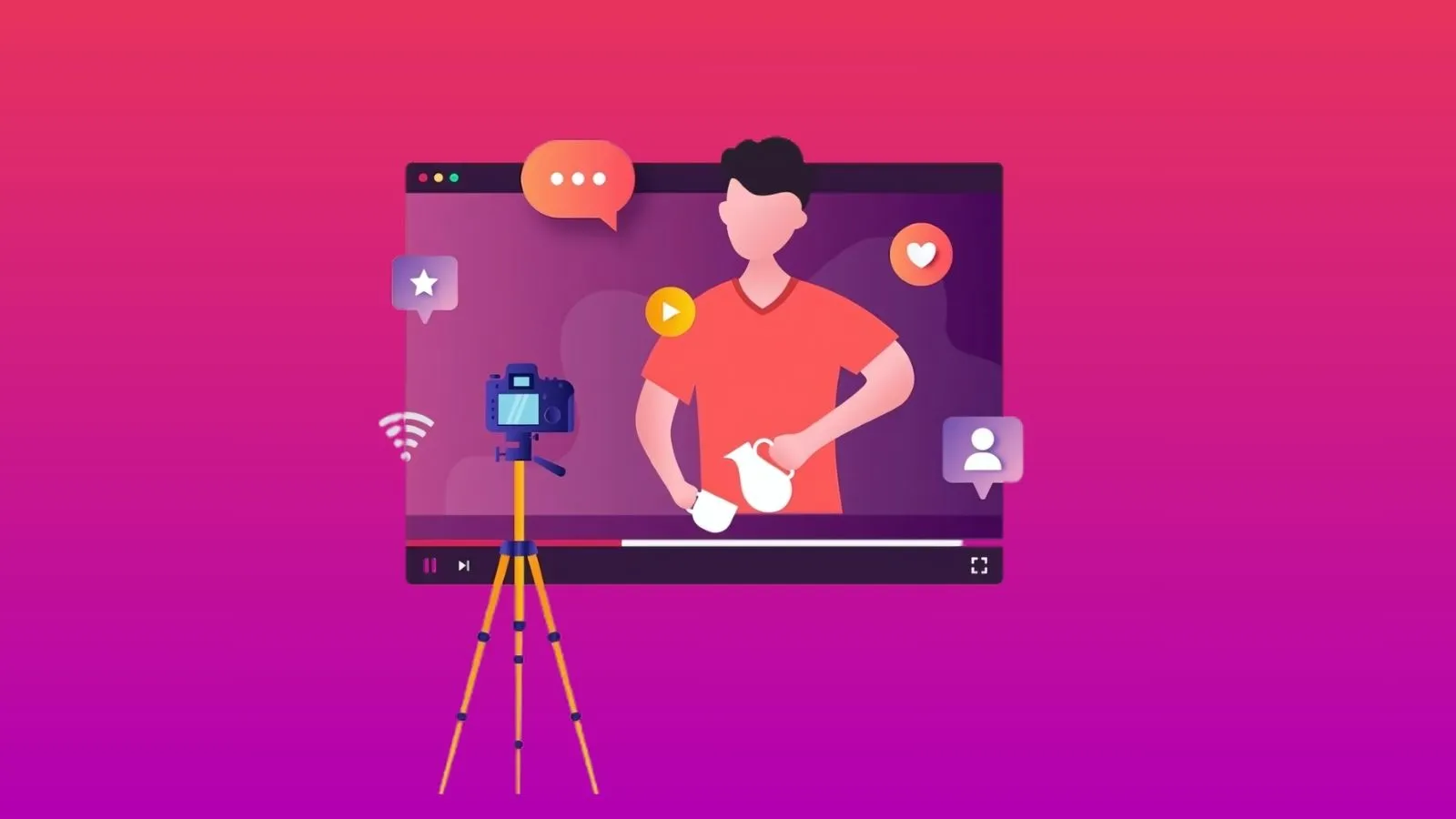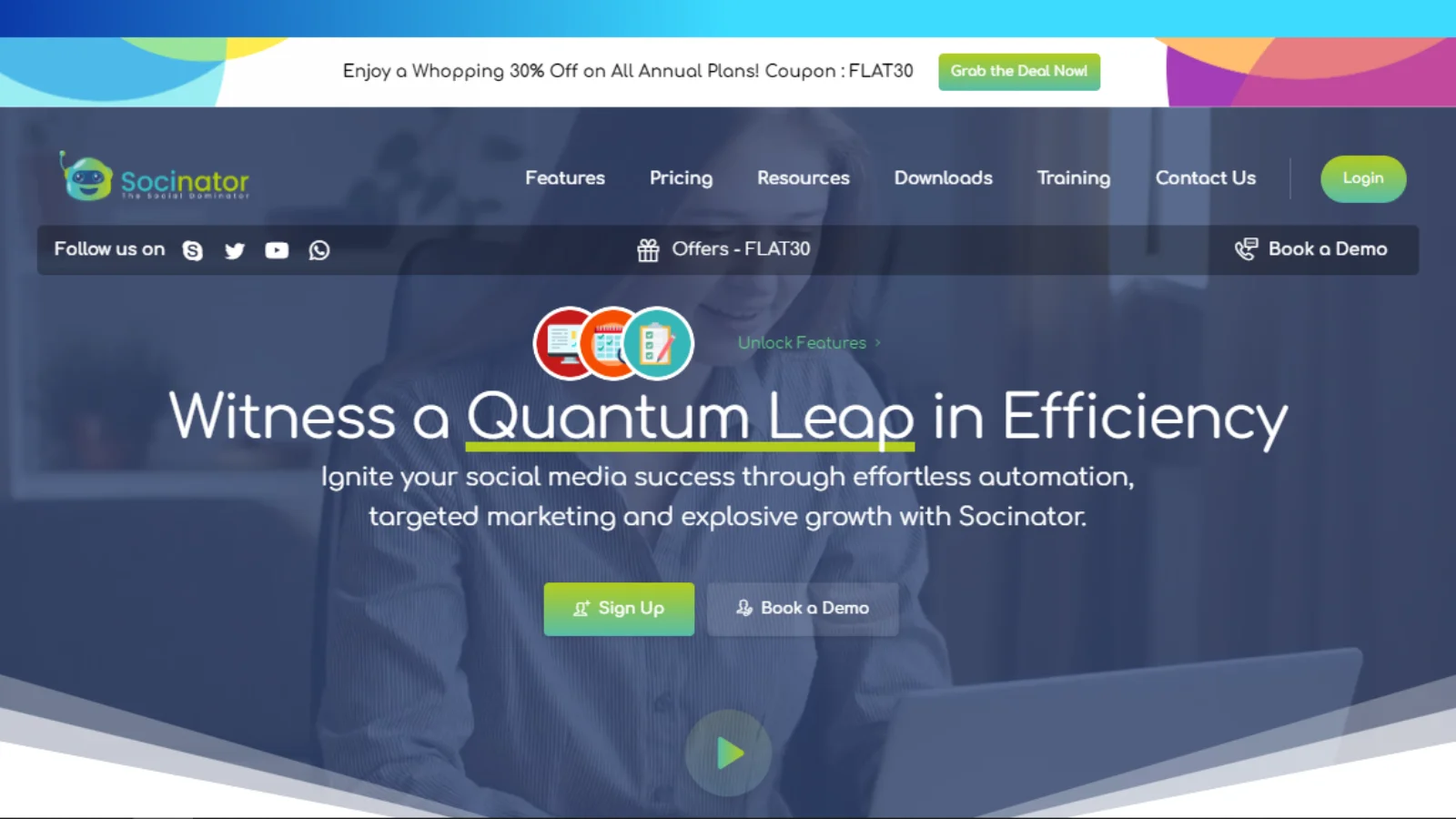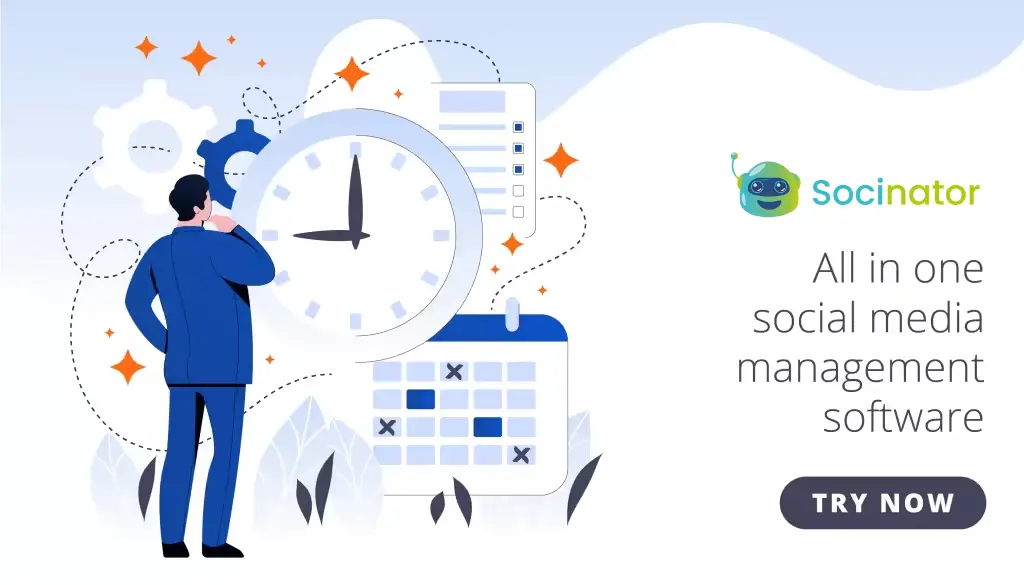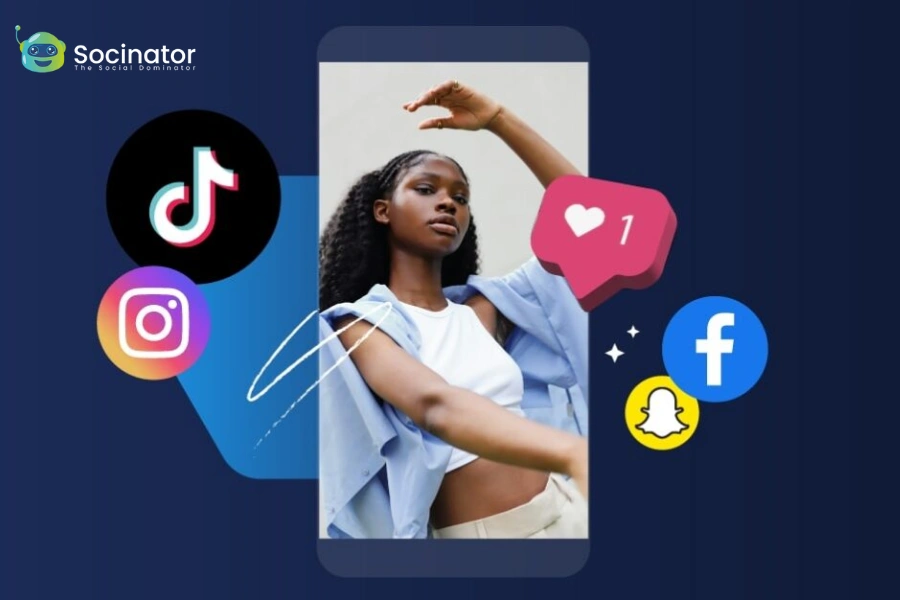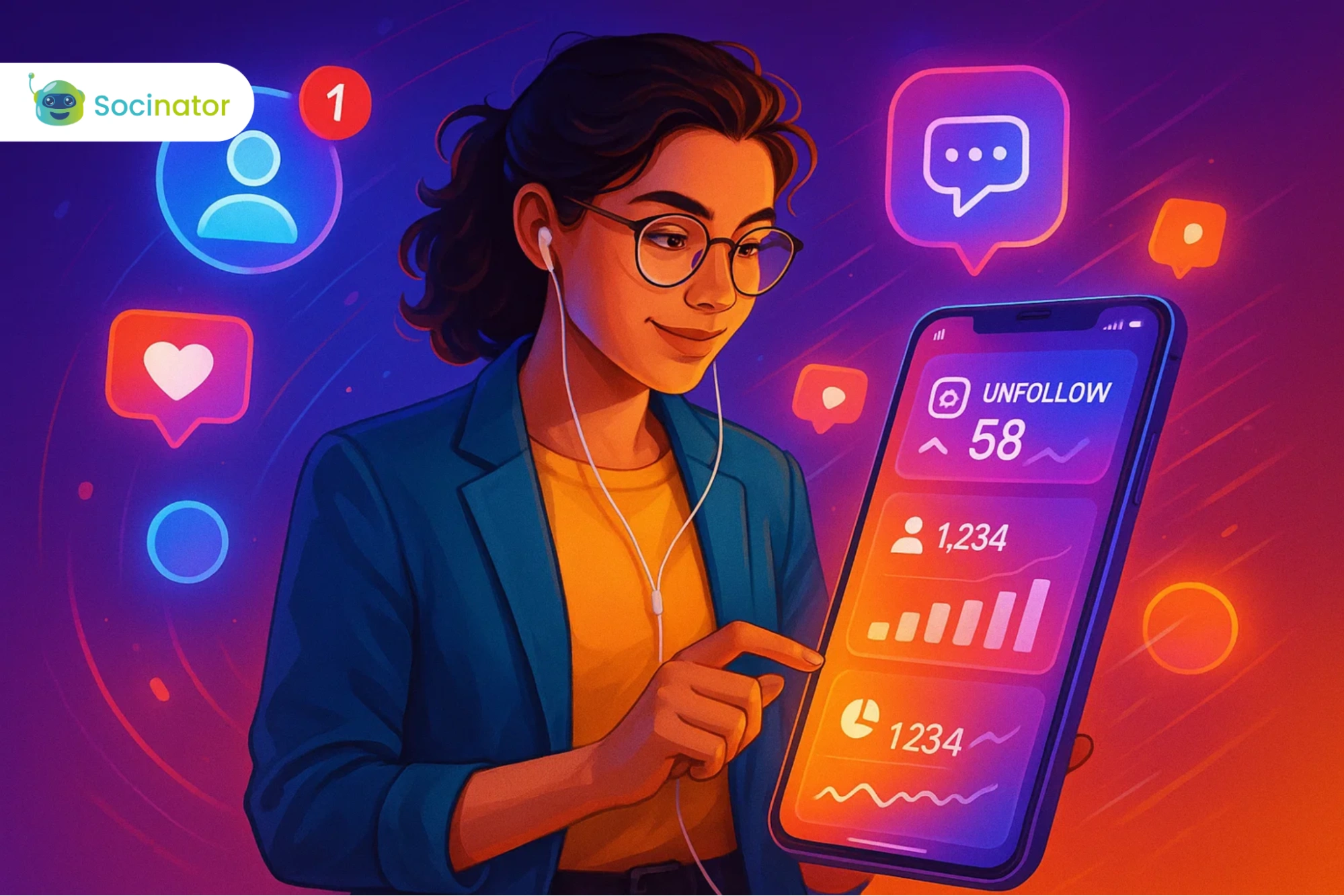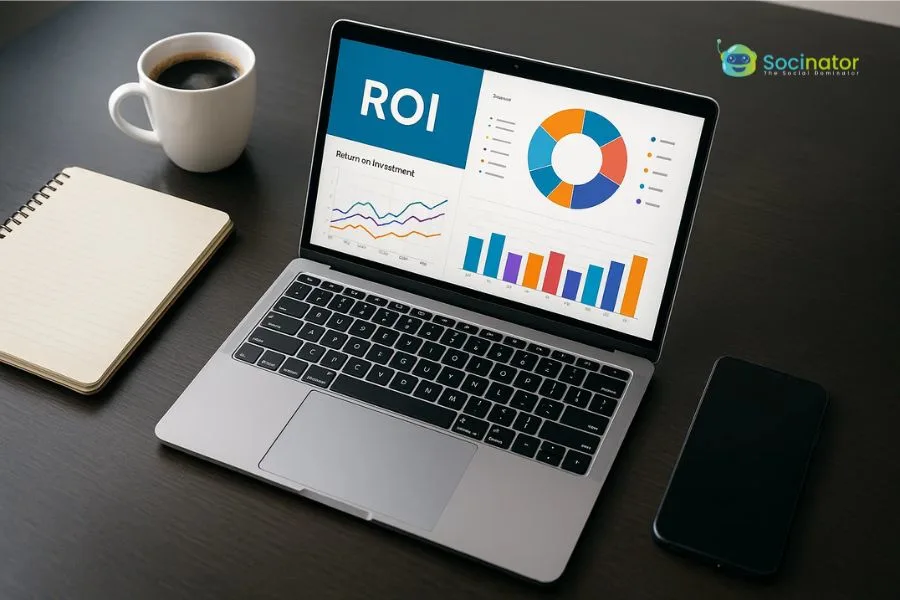Influencer marketing trends are constantly evolving, shaping how brands connect with audiences in the digital age. In this blog, we will delve into the top influencer marketing trends that are defining the landscape in 2024.
As brands strive to stay ahead of the curve, understanding these trends is crucial for developing effective marketing strategies that resonate with today’s consumers.
From micro-influencers to authentic content creation, we will explore the key trends driving influencer marketing forward and how you can leverage them to boost your brand’s presence and engagement.
Join us as we uncover the latest insights and strategies to help you navigate the trends in brand influencer marketing.
Listen To The Podcast Now!
What Are B2B Influencer Marketing Trends
B2B influencer marketing is a strategy where businesses collaborate with influencer individuals or entities within their industry to promote their products, services, or brands to other companies. Unlike B2C (business-to-consumer) influencer marketing, which targets individual consumers, B2B influencer marketing focuses on building relationships and credibility within a professional or industry-specific audience.
Let us learn more about Top trends in influencer marketing.
Latest Influencer Marketing Trends 2024
1. Micro and Nano Influencers Gain Prominence
Today brands increasingly favor micro (10,000 to 100,000 followers) and nano influencers (fewer than 10,000 followers). These influencers offer higher engagement rates and more authentic connections with their niche audiences. Let us discuss why these influencer marketing trends are taking shape.
Why Brands Prefer Micro and Nano Influencers
- Higher Engagement Rates:
- Quality Over Quantity: Micro and nano influencers tend to have more engaged audiences compared to macro-influencers (those with over 100,000 followers). Their followers are likely to interact with content, trust recommendations, and act upon them.
- Personal Connections: These influencers maintain closer relationships with their followers, often responding to comments and messages. These influencer trends foster a sense of community and loyalty.
2. Authenticity and Trust:
- Relatable Content: Micro and nano influencers often create content that feels more genuine and relatable. Their followers see them as peers rather than celebrities, which enhances trust and credibility.
- Niche Expertise: These influencers usually have in-depth knowledge and passion for their specific niches. This expertise makes their endorsements more convincing and authentic.
- Cost-Effectiveness:
- Budget-Friendly: Collaborating with micro and nano influencers is typically more affordable than partnering with macro or celebrity influencers. These influencer marketing trends allow brands, especially smaller ones, to maximize their marketing budgets.
- Scalable Campaigns: Brands can work with multiple micro and nano influencers simultaneously, reaching diverse segments of their target audience without exceeding budget constraints.
- Targeted Reach:
- Niche Markets: Micro and nano influencers cater to niche markets that mega influencers might overlook. This targeted reach enables brands to connect with specific consumer segments more effectively.
- Localized Influence: Nano influencers often have strong local influence, making them ideal for region-specific campaigns or promoting local businesses.
2. Long-Term Partnerships Over One-Off Campaigns
The focus is moving towards building long-term relationships between brands and influencers. These partnerships create consistent brand narratives and foster trust among audiences. Such influencer marketing trends are driven by the need for authenticity and sustained engagement, making influencer collaborations feel more genuine and less transactional. This approach is gaining traction due to several compelling reasons:
Consistency and Cohesive Brand Narratives
Long-term partnerships allow for the development of consistent brand narratives. When an influencer collaborates with a brand over an extended period, they can weave the brand’s message more seamlessly into their content. This consistency helps reinforce brand identity and values, making the brand more memorable and recognizable to the audience.
For instance, an influencer regularly promoting a skincare line can discuss different products, share ongoing results, and tell a more comprehensive story about their skincare journey.
Sustained Engagement and Deeper Connections
Long-term collaborations foster deeper connections between influencers and their audiences. Followers get to see a brand’s products integrated into the influencer’s daily life over time, which builds a more relatable and believable narrative. This sustained engagement can lead to higher conversion rates as followers are more likely to make a purchase when they see repeated, credible endorsements.
Better ROI for Brands
From a brand’s perspective, long-term partnerships can offer a better return on investment (ROI). One-off campaigns might generate a short spike in interest, but sustained collaborations can lead to ongoing brand awareness and loyalty. By working with influencers over a prolonged timeframe, brands can negotiate better terms and potentially reduce costs per engagement compared to constantly onboarding new influencers for one-off campaigns.
Influencer Familiarity and Product Knowledge
Long-term relationships allow influencers to become more knowledgeable about the brand’s products. This familiarity enables them to create more detailed, informative, and authentic content.
For example, an influencer who has used a product for several months can speak more authoritatively about its benefits and address any potential drawbacks, providing a more balanced and trustworthy review.
Strategic Campaign Planning
The latest influencer marketing trends rely on long-term partnerships. With long-term partnerships, brands can plan more strategically. They can align influencer campaigns with key marketing milestones, product launches, and seasonal promotions. This alignment ensures that influencer content is timely and relevant, maximizing its impact. Additionally, ongoing collaboration allows for continuous feedback and improvement, leading to more effective marketing strategies.
Case Studies and Success Stories
Several brands have successfully adopted this trend. For instance, fitness apparel brand Gymshark has established long-term partnerships with fitness influencers who regularly feature their products in workout routines, reviews, and personal stories. This approach has helped Gymshark build a loyal community and achieve significant growth.
Similarly, beauty brands like Glossier have benefited from long-term collaborations with beauty influencers who integrate Glossier products into their daily makeup routines, tutorials, and reviews, creating a consistent and compelling brand presence across social media platforms.
3. Rise of AI And Virtual Influencers
Artificial Intelligence (AI) and virtual influencers are becoming mainstream. Virtual influencers, such as Lil Miquela, offer brands complete control over their image and activities. AI helps in identifying the right influencers, predicting trends, and measuring campaign effectiveness. Such influencer marketing trends underscore the integration of advanced technology in influencer marketing strategies.
One of the most well-known virtual influencers is Lil Miquela, a digital character with millions of followers on Instagram. She collaborates with major brands, shares lifestyle content, and even interacts with her followers.
Advantages of Virtual Influencers:
- Complete Control: Brands have full control over virtual influencers, including their appearance, personality, and behavior. It eliminates the unpredictability associated with human influencers.
- Consistency: Virtual influencers can maintain a consistent brand image and message without the risk of personal controversies or scandals.
- Customization: They can be tailored to meet specific brand requirements and easily be updated or modified.
- Availability: Virtual influencers do not have scheduling conflicts, making them available for campaigns anytime.
Such newly emerging influencer marketing trends also come with some challenges. These are a few:
Authenticity: While virtual influencers can engage audiences, some consumers may find them less authentic compared to human influencers.
Connection: Building a genuine emotional connection with audiences can be more challenging for virtual influencers.
4. Emphasis On Short Video Content
Short video continues to dominate social media, with short-form videos on platforms like Instagram Reels and YouTube Shorts gaining traction. Influencers are using these formats to craft engaging and viral content. The trend reflects consumers’ preference for dynamic and easily digestible content. These formats are optimized for mobile viewing, making them ideal for on-the-go consumers. Influencers are increasingly using short-form videos to:
Dominance of Video Content For Social Media Influencer Marketing Trends
Video content remains at the forefront of social media engagement. The continued rise of platforms specializing in short-form video content, such as Instagram Reels and YouTube Shorts, underscores this trend. Instagram influencer marketing often involves short video content. Influencers create engaging videos to showcase products, share reviews, or demonstrate usage, capturing the audience’s attention quickly and effectively.
Platforms like Instagram and YouTube have revolutionized the way content is consumed and created, emphasizing the power of quick, engaging visuals over longer text-based posts.
Short-Form Video Content: The Key to Engagement
Short-form videos, typically ranging from a few seconds to a couple of minutes, are particularly effective for capturing and retaining audience attention. These formats are optimized for mobile viewing, making them ideal for today’s on-the-go consumers. Influencers are increasingly using short-form videos to:
- Create Viral Content: The algorithmic nature of influencer marketing platforms like Instagram Reels favors content that is engaging and shareable. Influencers can quickly amass large viewerships through creative, attention-grabbing videos.
- Tell Compelling Stories: Despite their brevity, short-form videos can convey powerful narratives and messages. Influencers often use these videos to share personal stories, product reviews, tutorials, and more in a concise and impactful manner.
- Leverage Trends and Challenges: Many short-form video platforms thrive on trends and challenges that go viral. Influencers who participate in or create these trends can significantly increase their visibility and engagement. The famous 75-day hard challenge is the best example of such influencer marketing trends.
5. Social Commerce Integration
Influencer marketing trends and e-commerce are increasingly intertwined. Features like Instagram Checkout and shoppable posts on various platforms streamline the path from discovery to purchase. This trend makes it easier for consumers to buy products directly from influencer content, enhancing the ROI for brands.
Shoppable Posts and Stories:
- Platforms like Instagram, Facebook, and Pinterest have introduced shoppable posts and stories, allowing users to click on tags within posts to view product details and make purchases without leaving the app. It reduces friction in the purchasing process, making it easier for consumers to buy what they see in influencer content.
In-App Checkout:
- Instagram Checkout is a prominent feature that enables users to complete their purchases within Instagram. This integration keeps the entire shopping experience within the social media platform, enhancing convenience and reducing the steps needed to complete a transaction.
Live Shopping:
- Live shopping combines live streaming with e-commerce. Influencers can showcase products in real-time, interact with viewers, and provide instant purchase links. This format creates a sense of urgency and excitement, often leading to higher engagement and conversion rates.
Product Tags and Links:
- Influencers can use product tags and links in their posts, stories, and videos to direct followers to e-commerce sites. These tags and links make it easy for followers to find and buy products featured in influencer content.
6. Authenticity and Transparency
Audiences are becoming more discerning, valuing authenticity and transparency. Influencers are expected to disclose paid partnerships clearly and create content that aligns with their brand. These influencer marketing trends are driven by growing consumer skepticism and regulatory scrutiny around advertising practices.
Building Trust
Transparent influencer marketing fosters trust and long-term engagement. Honest reviews and clear disclosures prevent backlash and strengthen relationships with followers.
Ethical Responsibility
Influencers have an ethical duty to be transparent about commercial relationships, ensuring followers can make informed decisions.
Technological Support
Platforms are enhancing tools for seamless and prominent disclosure of partnerships, supporting transparency efforts.
7. Automation Tools
Automation tools have revolutionized influencer marketing trends by making it more accessible, efficient, and effective for brands of all sizes. As the industry continues to evolve, automation tools increasingly shape the future of influencer marketing.
They streamline processes, enable reaching broader audiences, provide insights, facilitate content collaboration, and ensure regulatory compliance. Overall, they make influencer marketing more accessible, efficient, and effective for brands.
If you are an influencer marketer seeking an automation tool, you are in the right place.
Also Read
How To Nail Instagram Influencer Marketing in 7 Strategies
Top 5 Influencer Marketing Platforms You Must Fall In Love With
5 Proven Steps To Leverage An Influencer For Brands for Success
Socinator – Social Media Automation Tool
Socinator is a robust social media automation tool. It helps you streamline your content posting and management so that you will not lose focus on your quality content creation. With Socinator, you can catch up on the latest influencer marketing trends. Here is how Socinator can be a time savior and can assist you in streaming your social media management:
Auto Publish & Repost
Automate your posting schedule to ensure content is published at the desired time. Automatically repost top-performing videos to enhance your visibility on social media.
Auto Send, Accept, or Cancel Friend Requests
Streamline your growth and outreach by automating connection requests. Easily send, accept, or cancel requests with a simple configuration, allowing you to target your desired audience effortlessly.
Auto Like & Comment
Boost organic reach with automated likes and comments. Engage with others to show appreciation for their support without spending hours of your time.
Analytics & Reports
Monitor detailed analytics and measure your social media performance with ease. Socinator provides insights to help you understand what works best and improve your strategy.
Use Soicnator in your influencer marketing strategy to save time and work more efficiently. It simplifies campaign management and helps you get the most out of your investment.
To wrap up, check out our blog conclusion and visit our FAQ section for any questions.
Conclusion
Significant shifts toward authenticity, technology integration, and strategic partnerships mark influencer marketing trends in 2024. Micro and nano influencers are becoming key players due to their genuine connections and high engagement rates.
Long-term collaborations are changing one-off campaigns, fostering deeper brand narratives, and maintaining audience trust. The rise of AI and virtual influencers introduces new possibilities. And short-form video content continues to captivate audiences. Social commerce integration is streamlining the purchase journey, enhancing ROI for brands.
Finally, the emphasis on transparency and automation tools is making influencer marketing more efficient and trustworthy. By embracing these trends, brands can effectively navigate the dynamic landscape and forge stronger connections with their audiences.
FAQs
Why is influencer marketing a trend?
Influencer marketing is on the rise, with 40% of consumers expressing a preference for engaging with micro and nano-influencers.
What is the next big marketing trend?
Social commerce is set to revolutionize inbound and outbound marketing for online retailers, blending e-commerce with social media to let customers discover, engage, and buy products directly on social platforms.
What is the ROI of influencer marketing?
Influencer marketing is highly effective, offering an impressive return on investment (ROI). On average, businesses earn $5.78 for every $1 spent on influencer marketing. This means that for every dollar you invest, you can expect to see nearly six times that amount in return.

